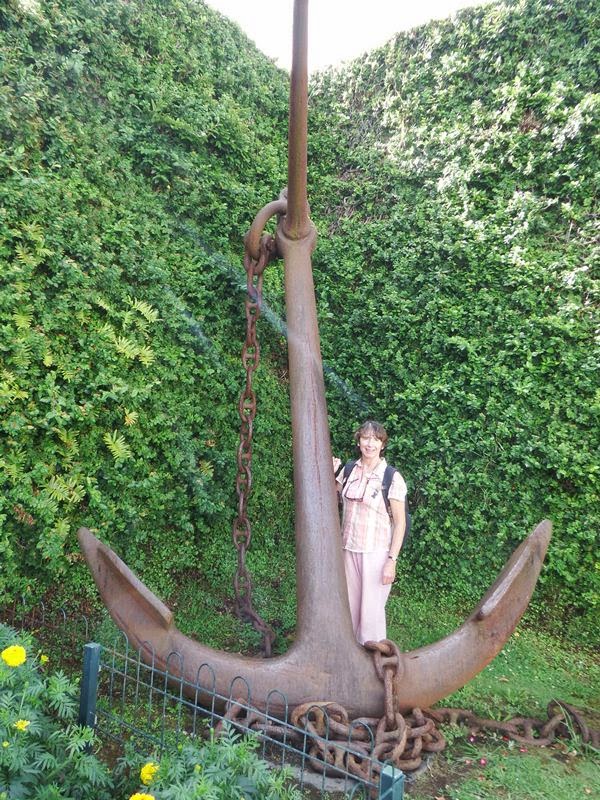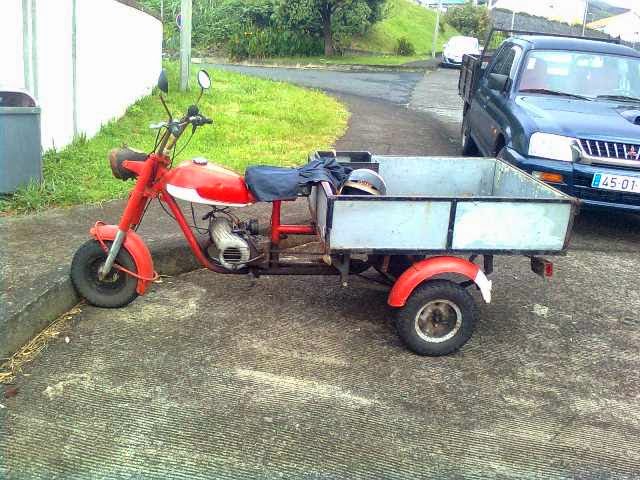The passage to Bermuda took 8 days and was mixed as regards the
weather. The first two days were good sailing in sunny weather, with the
occasional squall passing over. The wind gradually decreased once we reached
the Tropic of Cancer and we motored for the next 5 days. We used all but our
emergency reserves of diesel getting through the Horse Latitudes. There was
still no wind. The Atlantic Ocean was glassy, reflecting the stars, and our
wake was a phosphorescent trail. Almost as soon as the emergency reserves of
diesel went into the tank, the wind came back. We heard the forecast and the
small craft warning 60 miles away from Bermuda. In the end we had a tiny bit of
genoa flying as we slowed down so that we would pass through the extensive
reefs surrounding Bermuda in the light. The sea was soon whipped up into an
uncomfortable state, which I called rough and Jeremy said was moderate. It was
much colder too. Naked sailing had been replaced with woolly hats, socks, at
least two layers of clothes and a jacket.
 |
| North Atlantic sunset |
One advantage of calm seas was being able to take a dip in the ocean.
This attracted the sea birds. As many as 7 boobies sat and watched this
peculiar human behaviour! The AIS showed us 9 vessels over the duration of the
passage. Three of them were going to pass within a mile of us. One was a yacht,
the other two were ships. We called them on the VHF radio. Two altered course
and the other kept to his course and passed just a mile in front of our bows.
It seemed so close in the dark! Jeremy saw the tail of a whale disappearing
below the surface ahead and there were a few tropic birds. That was all, except
for fiery sunsets, beautiful dawns and amazing displays of stars.
 |
| Flat calm sea in the horse latitudes |
So, what went wrong? First to go down was Navtex, our weather receiver.
Jeremy took it to bits and found the circuits inside had corroded. We searched
through our cruising guide and found the SSB frequency for the US Goastguard.
We picked up their weather transmissions, but often missed our sea area, as
they broadcast so many. Next, one of our three batteries overheated. I was very
hot and sweaty in my bunk above the battery compartment one night. No wonder –
I was cooking. Jeremy moved me to his bunk while he set up a fan to keep the
batteries cool. He was able to isolate the offending battery and switch it off.
Then, the heads started leaking. Water of unknown origin (would you want to
taste it?) leaked out from under the pedestal. Fortunately, only a little water
was leaking but it was going to be another job for later. Last, but not least,
Jeremy noticed the stern fibre glass was flexing as Hydrovane steered the boat.
We had put larger plates on the bolts on the inside some time ago. Now we would
need a larger wooden backing plate to strengthen the stern. Yet another job for
the harbour. Oh, the joys of sailing!
 |
| The Customs dock, Ordnance Island, St Georges |
We arrived at the Customs dock in St Georges Harbour, Bermuda at 7.30am
our time on 23rd May. We soon learned that Bermuda was one hour
ahead, due to daylight saving time. As Customs opened at 8.00am, this suited us
fine. A very friendly, football fan officer told Jeremy the good news that
Sunderland had survived relegation, once he learned of Jeremy’s home town. We
filled in the forms, paid 35USD each and we could stay for 90 days, although
we’ll probably only stay for a week.
 |
| The anchorage at St Georges |
St Georges is a UNESCO World Heritage
Site, like the Taj Mahal. Once anchored, we slept for 2 hours then went ashore
to Tourist Information. The plywood was sourced straight away from a
carpenter’s shop just up the road. No charge. The battery took a little longer.
Today was Friday and it was a holiday weekend, with many businesses closing
until Tuesday. We met many helpful people, but it was clear that we would have
to go to the capital, Hamilton, to find the battery we wanted. The next day we
caught the bus and 50 minutes later we were looking for chandleries. After much
frustration, we bought a battery we could top up, which isn’t exactly what we
want but it will have to do. It cost 210USD. We had a look around Hamilton,
which is very like any Western city, and just had to go into Marks and
Spencers! We took a taxi back to St Georges, collecting the battery on the way.
This cost 40USD. Bermuda is proving expensive for us.
 |
| Bermuda Day procession |
Jeremy has worked hard doing the jobs. The leak in the heads has been
fixed with a new jubilee clip on a hose. A new wooden backing plate has been
shaped and fitted. The new battery has been wired in. A lubrication oil and
filters change has been done and the diesel fuel filters, with the pipes checked
for rust particles. I’ve fed the mechanic and written blogs. Navtex is beyond
repair.
 |
| Colourful costumes on Bermuda Day |
We went to Hamilton again on holiday Monday and watched the parade to
celebrate the Queen’s Birthday and Bermuda Day. Bermuda is British Overseas
Territory with strong links to the USA. The Bermudan dollar is equal to the USA
dollar and just about everything is imported from America. It’s a lovely place,
steeped in history with much of its heritage preserved. We wanted to stay
longer but a weather window opened up on Tuesday, which we would have been
fools to miss.
 |
| This costume is so heavy it needs wheels |
We rushed round like headless chickens on Tuesday doing laundry,
shopping, checking emails and preparing Sal Darago for her next voyage. We
cleared out on Wednesday 28th May leaving Bermuda at 2.00pm for
anything from 18-25 days at sea. Our next landfall should be Horta on the
island of Faial in the Azores.
 |
| Dancing in the street |





















